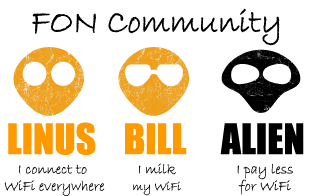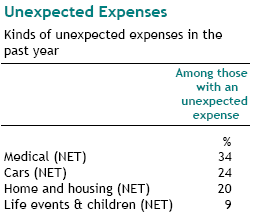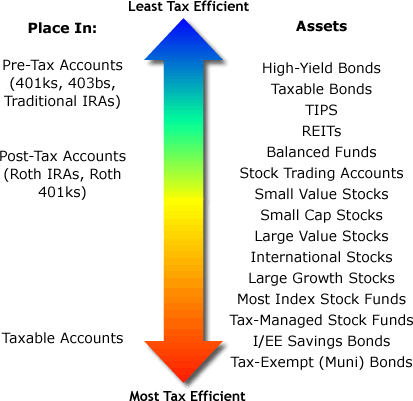FON is a company with an interesting idea: What if everyone shared their WiFi with each other? We could all get internet coverage in much of the world for free. But what about the bad people? FON has developed routers that have both public and private channels to allow people to share without worrying about their own privacy. There are still other worries, but considering how many people already have wide-open access points, I don’t think it’s too horrible. Sometimes they charge a one-time $30 fee for the special routers, and sometimes it’s free.
In addition to allowing the “sharers to share”, you can also pay for access to their network. Finally, there is the entrepreneurial option – get a kickback for selling your own internet access. They’ll even give you a free router to start. This is intended (on the honor system) for people who live near a Starbucks or other busy gathering space.

By installing your FON router, you let others share your broadband for a daily fee. A fee that goes straight into your pocket. A savvy patron of your Starbucks need only pay $2 a day for your WiFi. They’d have to be a grande drip to pay the [regular T-Mobile fee of] $10 Starbucks charges. Each customer who chooses you puts $1 into your latte fund. Cha-ching.
I think their new software even lets you decide how much bandwidth you want to “rent” out, so you won’t be stuck with molasses. Pretty slick! Thanks to Torger for the tip.


 I’ve always thought of 403(b)s as identical to 401(k)s, just for non-profit and educational institutions. But upon discussing this with a teacher, I found out that they can have their own unique problems: primarily high-priced annuities. Did you know that 80% of 403(b) funds are currently invested in fixed or variable annuities? This is really surprising, considering that annuities are usually only a good idea for high-income people who’ve already maxed out all their other tax-deferred options – why put a tax-deferred product inside another tax-deferred product?
I’ve always thought of 403(b)s as identical to 401(k)s, just for non-profit and educational institutions. But upon discussing this with a teacher, I found out that they can have their own unique problems: primarily high-priced annuities. Did you know that 80% of 403(b) funds are currently invested in fixed or variable annuities? This is really surprising, considering that annuities are usually only a good idea for high-income people who’ve already maxed out all their other tax-deferred options – why put a tax-deferred product inside another tax-deferred product? SunTrust Bank is offering a free roundtrip ticket on AirTran (16 bonus A+ Rewards credits) for depositing $10,000 of new money into a Premium Money Market Performance Account by March 9, 2007. You must keep it there for 90 days, and the account currently pays 2.25% APY. Doing some rough math, the interest rate difference from an
SunTrust Bank is offering a free roundtrip ticket on AirTran (16 bonus A+ Rewards credits) for depositing $10,000 of new money into a Premium Money Market Performance Account by March 9, 2007. You must keep it there for 90 days, and the account currently pays 2.25% APY. Doing some rough math, the interest rate difference from an 
 Three months ago on November 16th, I started a
Three months ago on November 16th, I started a  Constantly checking up on how many cell phone minutes you have left? The Windows application
Constantly checking up on how many cell phone minutes you have left? The Windows application 


 The Best Credit Card Bonus Offers – March 2024
The Best Credit Card Bonus Offers – March 2024 Big List of Free Stocks from Brokerage Apps
Big List of Free Stocks from Brokerage Apps Best Interest Rates on Cash - March 2024
Best Interest Rates on Cash - March 2024 Free Credit Scores x 3 + Free Credit Monitoring
Free Credit Scores x 3 + Free Credit Monitoring Best No Fee 0% APR Balance Transfer Offers
Best No Fee 0% APR Balance Transfer Offers Little-Known Cellular Data Plans That Can Save Big Money
Little-Known Cellular Data Plans That Can Save Big Money How To Haggle Your Cable or Direct TV Bill
How To Haggle Your Cable or Direct TV Bill Big List of Free Consumer Data Reports (Credit, Rent, Work)
Big List of Free Consumer Data Reports (Credit, Rent, Work)